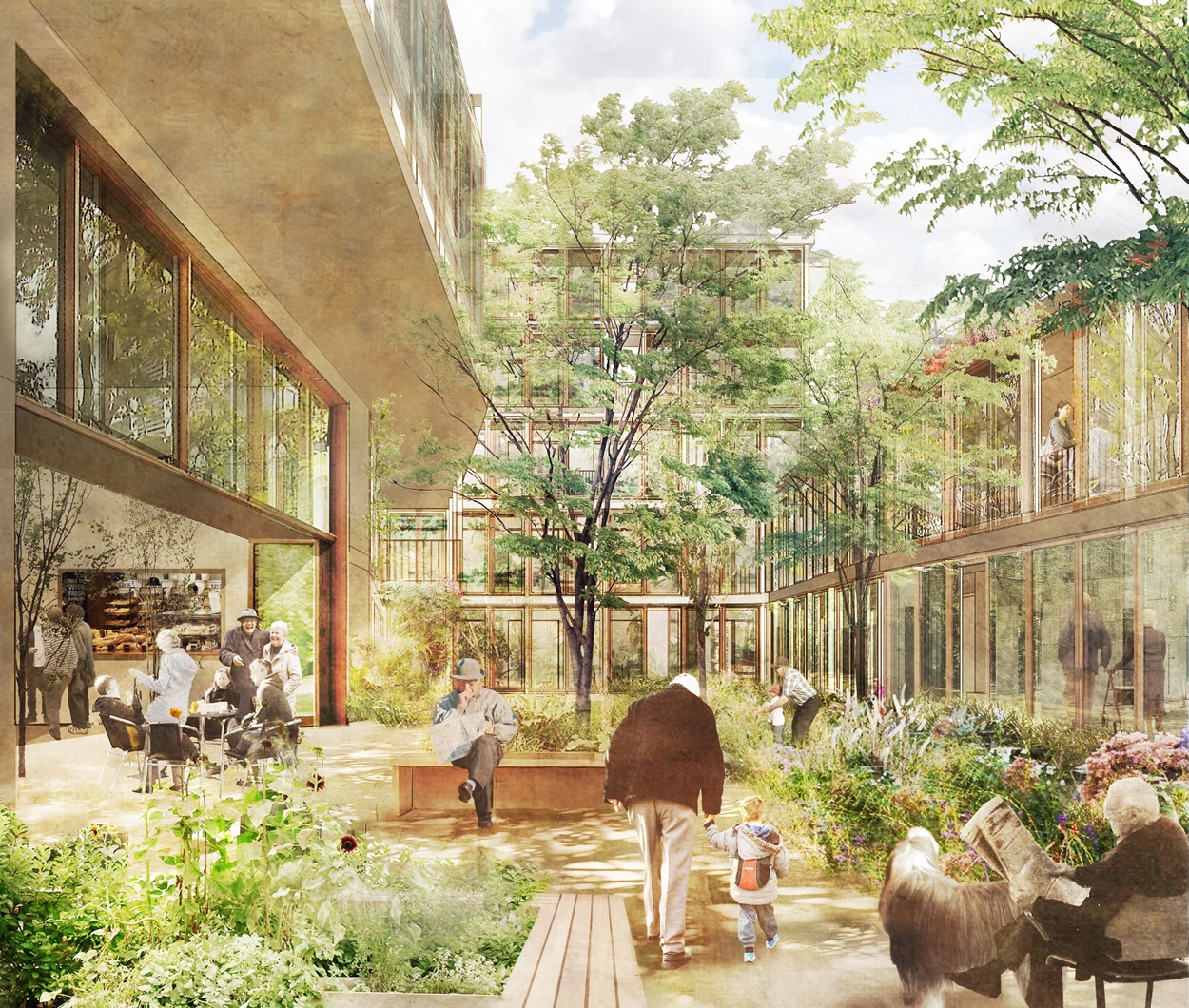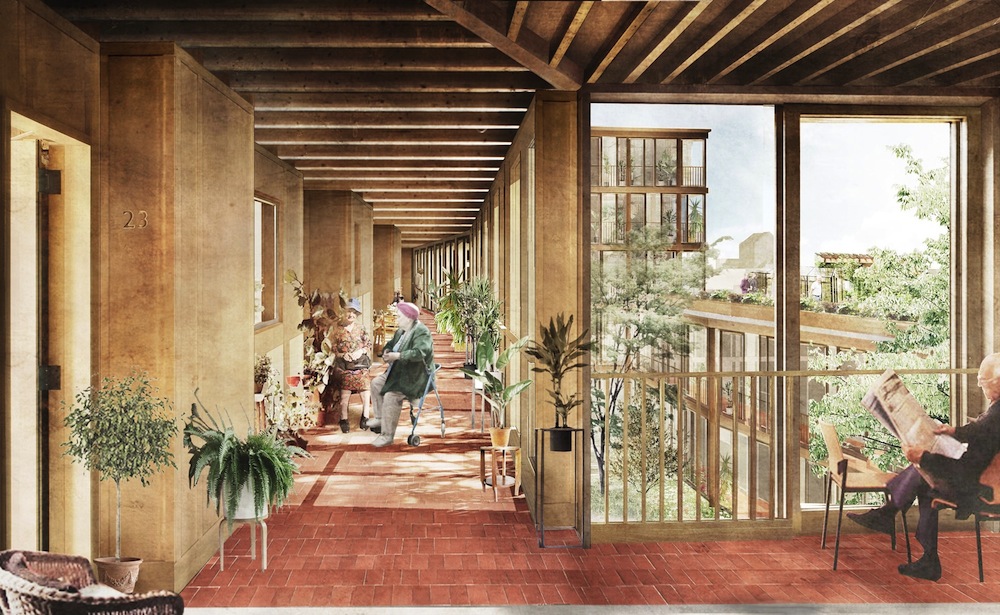While more people are living longer, not everybody is living longer. One of the biggest problems that the aging population faces is loneliness.
For septuagenarians and older, spouses, friends, and family members die, and the elderly are faced with the lack of support from peers. No one is there to help do household chores, no one is there to check on well-being. No one is there to even just have a conversation.
Witherford Watson Mann Architects has one solution, though. The firm designed a community residence located on a busy street in South London, where elderly people share space with neighbors at the center of an urban district.
HuffPost UK reports that permission has just been granted for a building in the Bermondsey district that will be home to 90 people over 70 years old. It will be completed in 2018.
The building is a modern take on an almshouse, a centuries-old British residence for the poor and old. But unlike the almshouses that were tucked away and set at a distance from the streets, the new facility will be front-and-center, with large glass panels that let visitors and passersby see its interior.
The five-story, 6,152-sm building will have courtyards, walkways, and lounges, and instead of kitchens, the residence will have a cookery school. The 200 sm of communal features are meant to foster interaction.
"There’s a lot of discussion around this issue of loneliness, particularly in cities, ironically,” Stephen Witherford, a Director of Witherford Watson Mann, told HuffPost UK. “You’ve got very dispersed families, some people are abroad, so the family structure we knew has obviously transformed geographically.
"A lot of older people don’t want to be seen as a burden. They lose a partner and they get very lonely, and their well-being deteriorates significantly through that, health and appearance."

Related Stories
| Jul 18, 2014
Top Engineering/Architecture Firms [2014 Giants 300 Report]
Jacobs, AECOM, Parsons Brinckerhoff top Building Design+Construction's 2014 ranking of the largest engineering/architecture firms in the United States.
| Jul 18, 2014
Top Engineering Firms [2014 Giants 300 Report]
Fluor, Arup, Day & Zimmermann top Building Design+Construction's 2014 ranking of the largest engineering firms in the United States.
| Jul 18, 2014
Top Architecture Firms [2014 Giants 300 Report]
Gensler, Perkins+Will, NBBJ top Building Design+Construction's 2014 ranking of the largest architecture firms in the United States.
| Jul 18, 2014
2014 Giants 300 Report
Building Design+Construction magazine's annual ranking the nation's largest architecture, engineering, and construction firms in the U.S.
| Jul 7, 2014
7 emerging design trends in brick buildings
From wild architectural shapes to unique color blends and pattern arrangements, these projects demonstrate the design possibilities of brick.
| Jul 2, 2014
Emerging trends in commercial flooring
Rectangular tiles, digital graphic applications, the resurgence of terrazzo, and product transparency headline today’s commercial flooring trends.
| Jun 30, 2014
Research finds continued growth of design-build throughout United States
New research findings indicate that for the first time more than half of projects above $10 million are being completed through design-build project delivery.
| Jun 18, 2014
Arup uses 3D printing to fabricate one-of-a-kind structural steel components
The firm's research shows that 3D printing has the potential to reduce costs, cut waste, and slash the carbon footprint of the construction sector.
| Jun 12, 2014
Austrian university develops 'inflatable' concrete dome method
Constructing a concrete dome is a costly process, but this may change soon. A team from the Vienna University of Technology has developed a method that allows concrete domes to form with the use of air and steel cables instead of expensive, timber supporting structures.
| May 29, 2014
7 cost-effective ways to make U.S. infrastructure more resilient
Moving critical elements to higher ground and designing for longer lifespans are just some of the ways cities and governments can make infrastructure more resilient to natural disasters and climate change, writes Richard Cavallaro, President of Skanska USA Civil.

















